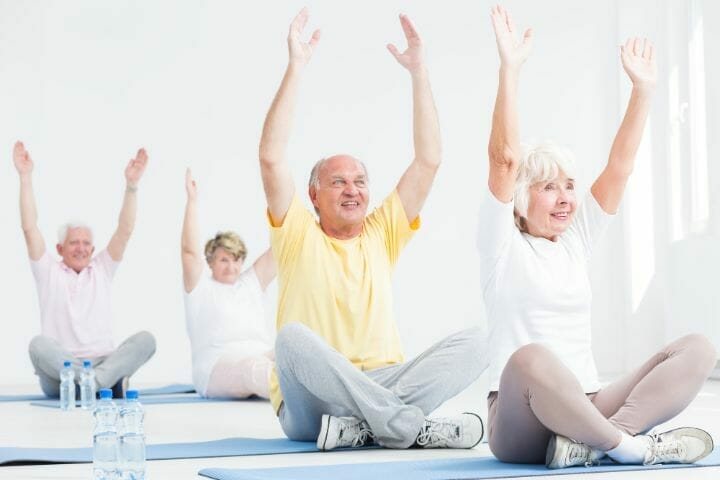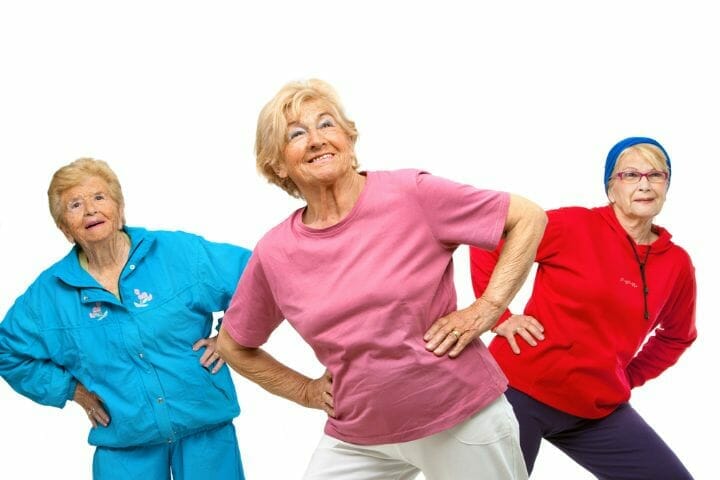Looking for tips on how the elderly can improve mobility? We will discuss elderly mobility in-depth and suggest what to do.
Contents
Mobility is nothing but being able to leave home and walk without any assistance. We see that once our parents or ourselves grow older, there can be a decline in mobility because of different factors. If you have any elders around you, it is essential to take some precautions and regularly monitor if any changes are happening in their bodies that may lower mobility.
This article will help you understand the reasons for different mobility issues that a person who is aging faces, why mobility is essential for a person, and solutions and precautions to be taken by everyone to avoid or address any mobility issues.
Why Is Mobility Essential For The Elderly?
To maintain physical and mental health, mobility is essential for the elderly. Leaving the house by themselves increases self-confidence helping them maintain social relations.
According to American Center for Disease Control, “mobility out of home is required to make the use of facilities in the neighborhood, to access commodities and also to participate in the physical, cultural and social activities.”
The CDC identifies the below-mentioned reasons stating why knowing about mobility is essential for seniors.
- Out of four Americans who are 65 years, one lives up to their 90s.
- An elderly who stays alone or independently must have a plan for mobility changes that they face in the future.
- There are cases of reduction in health and social interactions when the elderly stop driving or fall.
- Most of the deaths and injuries in older adults result from lack of mobility during motor vehicle crashes and falls.
mobility of the elderly is an essential factor for them as it talks about the physical and mental health of the elderly. Physiologically, walking results in the functioning of neural, sensory, cardio-respiratory systems. Studies and Research have proved that any intervention will increase the strength of the muscles that will improve mobility.
This explains that mobility promotes healthy aging as it talks about the physical movement of a person. Additionally, our ability to perform demanding and complex tasks sees some issues, and it gets difficult to do them as we age. Sometimes people cope with declining functional capacity by making changes in their frequency or the way they do those tasks; this way, they try to avoid difficulties while doing them.
Most of the injuries or fatal falls in the elderly are a result of their inability to walk. There are cases of fractures in the elderly which are because of falls as their bone strength weakens with age. Fractures in the hip can be fatal and become severe for the elderly. Such physical falls can become dangerous for the elderly as they age; this will increase the difficulties of the elderly while they walk.
You may also like How to Bathe an Elderly Person in Bed?
What Are The Factors That Are Responsible For Mobility Issues?
Factors like illness, injuries, vision, and hearing changes majorly impact mobility in the elderly. It may lead to health issues, disability, dependency, and also chances of dying. Briefly, the common risk factors to the elderly for their mobility impairment are chronic diseases like diabetes, heart diseases, arthritis, balance impairment, obesity, low physical activity, and older age. We come across multiple reasons for why there is a decline in mobility as we age. The primary reason for this being the reduced mobility. This means being stagnant and not moving around for a long time. It states that it operates on to lose the mobility or use the mobility.
Below are some reasons for the decline of mobility in the Elderly:
- As we age, we come across stiffness in the joints because of a reduction in bone density. This may lead to osteoporosis in the long run or may lead to fractures. We can face friction while we walk, thus impacting mobility for the elderly.
- Pre-existing medical conditions like Arthritis, Alzheimer’s, Parkinson’s, hip fractures, or diabetes which are common in old age, can influence walking and also may bring changes in exercise habits.
- Issues in Hearing and vision results in the loss of confidence to move around, as they have a fear of falling, affecting mobility.
- When there is loss of physical strength, motor functions, and loss of balance will affect mobility in the elderly.
- Less common symptoms that affect the mobility of the elderly can be a recent hospitalization, being female, issues with thinking or memory skills, depression, drinking alcohol or smoking, and having feelings of helplessness. A person having one or more of these issues can face the risk of mobility.
You may also like How to Cope With Caring for Both Young Children and Elderly Parents
Identify The Issues Of Mobility At The Beginning With The Help Of The Below Factors
It is important to address the mobility issues at the beginning. One can assess mobility either with a self-report that proves that one has difficulty doing mobility tasks or with the help of some standard tests that are based on performance.
One of the most accessible tests to mobility is Get Up and Go, which will help an expert to estimate how long does it take for a person to stand from where they sit or to walk for 10 feet distance, or to sit down or to turn around or to walk back to sit in the chair. It takes one second for a normal person with good mobility to walk fast than one yard. If this is satisfied, then that person is normal; if not, it shows a gait problem that can increase the chances of falling.
Asking these questions, according to researchers of the University of Alabama, will help us identify if there are mobility issues:
- Do you face difficulty while climbing ten steps or to walk 1 quarter a mile?
- Did you change the way of climbing or walking because of any health or physical reasons?
To understand these issues in the elderly, you need not meet a doctor, and you can identify these by yourself:
If walking or climbing stairs is difficult for the elderly around you, that indicates that they are facing issues, and it is time to meet the doctor. A doctor will help you address the problem that is causing this and help address it better before it leads to loss of mobility. You can find the standard Get up and Go test online and also the mobility assessment that is performance-oriented. Let the elderly take the test when you are around, as you can help them address it better. If the elderly do not have stability on their feet, then avoid taking this test at home as falls can result in loss of mobility.
What Should We Do When Someone Around Us Lose mobility?
Some solutions that will help in addressing the decline of mobility as per the website of Harvard health are mentioned below:
- Take physical therapy, which will improve your balance and serve as strength training. During this session, a specialist will help the elderly retain their strength and help them perform some postures and movements.
- Taking Occupational therapy will improve the person’s ability to perform daily activities and use tools like fixtures in the bathroom or a grab bar. Improving dignity and independence of life is vital for confidence and mental health.
- Social support will help in eliminating barriers of mobility like lack of having transportation.
- May need to approach subspecialists to treat certain medical conditions that can lead to immobility. Using wheelchairs, walkers, scooters, and canes can open the door to greater mobility.
You may also like Best Chair Exercises for Seniors
Ways In Which We Can Improve The mobility In The Elderly
- Exercising regularly: Doing regular exercises, as mentioned above, like stretching, will help reduce the symptoms of arthritis or solve imbalance issues. The Elderly can even try swimming, ballroom dancing, and walking, which will increase their mobility. Some elderly people may need assistance while they do the exercises that can be provided either by someone at home or consulting a physiotherapist for the same will help them.
- Choosing a suitable living space: Some houses may not have enough space for the elderly to walk around. So try to create a place or move the elderly into a place where they can walk around. Elderly people may have difficulty in seeing, to make it safer, see that the area they walk in is well lit to prevent any falls. To increase the safety levels, you can fix ramps and railings for them to hold while walking.
- Improve balance: Some elderly may be facing balance issues and fall while walking. This can be prevented with regular practice, which will help in improving the balance. Doing regular exercises like standing on one foot, raising and lowering one foot, or climbing the stairs will improve their balance. Monitoring the elderly while doing these is necessary.
- Healthy diet: Being obese can put pressure on joints making it difficult to walk. Replacing processed food with vegetables, fruits, whole grains, and lean meats will help the elderly lose extra weight and get healthier. If you feel that you cannot bring positive changes in the food, you can consult a nutritionist who will bring the changes effectively.


